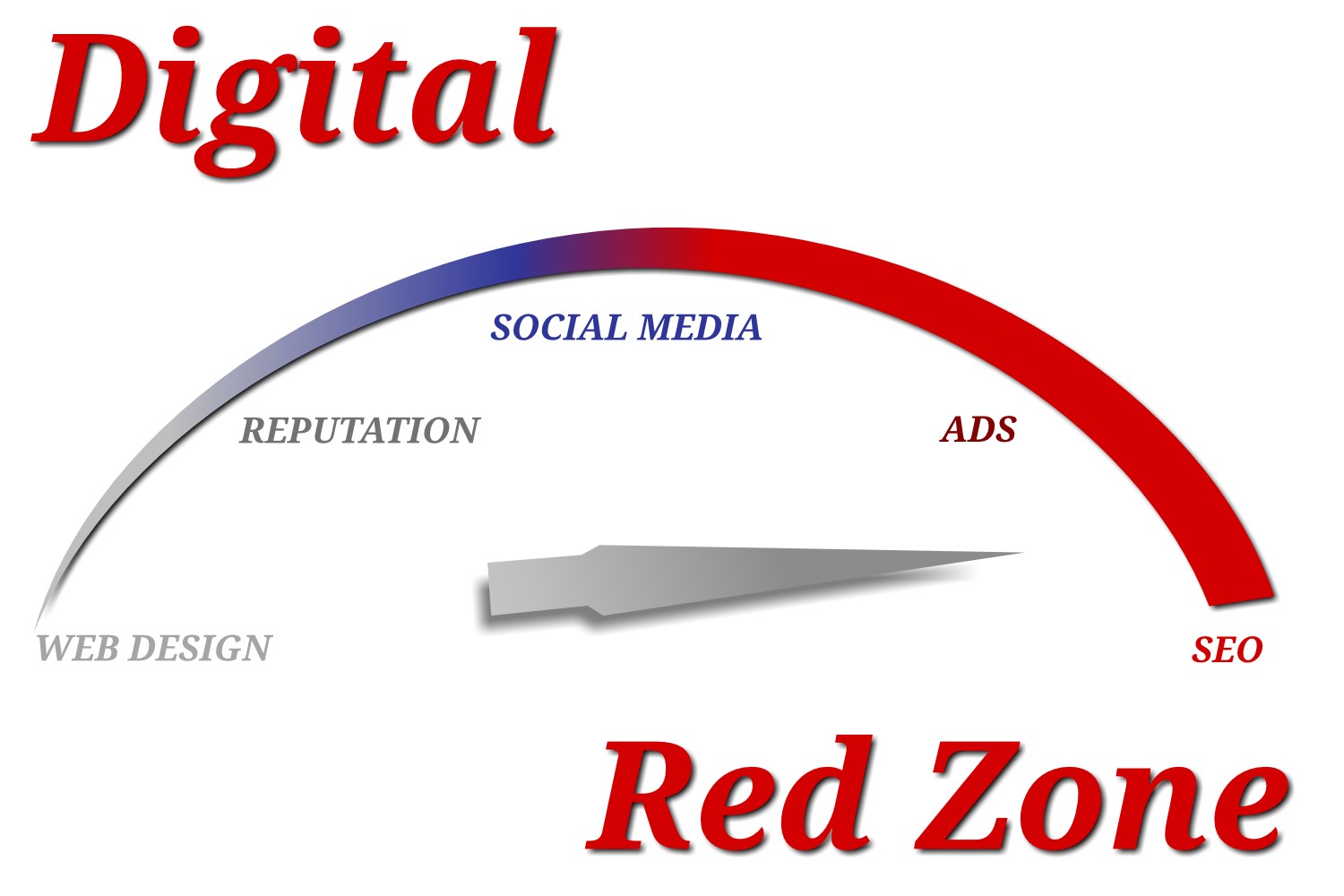Referral Marketing Secrets That Boost Sales Fast

What if you could quadruple your sales simply by letting your customers spread the word? With referral marketing , this isn’t just hype—it’s fact. Studies have revealed that referred customers are four times more likely to buy and have a 16% higher lifetime value than non-referred counterparts. In this comprehensive guide, you’ll unlock the secrets behind successful referral programs , tap into the psychology of trust, and discover actionable steps to turn any customer into a loyal brand advocate—all while driving rapid, sustainable growth.
Unveiling the Power of Referral Marketing: Surprising Facts That Could Transform Your Sales
- Did you know that referred customers are 4X more likely to buy and have a 16% higher lifetime value than non-referred ones? Discover how these astonishing figures make referral marketing a must-have weapon in your sales strategy arsenal.
Referral marketing is more than a passing trend—it’s one of the most powerful growth engines available to businesses today. The evidence is compelling: people trust recommendations from friends and family over any form of advertising, making referral programs a linchpin of any effective marketing strategy. Satisfied, loyal customers become passionate brand advocates, willing to share their positive experiences and refer others to your products or services, driving measurable increases in both conversion rate and customer base.
Unlike expensive ad campaigns with fleeting returns, referral marketing leverages every happy customer’s voice, turning them into true ambassadors. The process is repeatable and scalable, meaning you will see accelerated growth as each new advocate brings more potential customers into your ecosystem. By integrating social media sharing, automated referral links , and compelling incentives, businesses can harness exponential benefits—elevating their marketing strategy from ordinary to extraordinary.
Revealing the Fundamentals: What Makes Referral Marketing So Effective?
Defining Referral Marketing: More Than Just Word of Mouth
While “ word of mouth ” is as old as commerce itself, referral marketing is a structured, trackable marketing program designed to maximize the power of personal recommendation. At its core, referral marketing encourages your existing customers to introduce your product or service to friends, family, and peers through a guided process, often powered by technology such as unique referral links or codes. Unlike chance conversations, these systems incentivize advocacy, capturing referrals at scale and ensuring they can be properly credited, rewarded, and measured.
In contrast to organic buzz, referral marketing brings intentionality, transparency, and reward mechanisms to the mix. Businesses can offer tailored referral incentives for successful conversions, such as discounts, gift cards, or premium upgrades. Meanwhile, customers gain the chance to earn tangible rewards while sharing products and services they genuinely love, aligning everyone’s interests for mutual benefit. This approach transforms informal word of mouth into a key pillar of your overarching marketing strategy .
How Referral Marketing Differs from Traditional Marketing Strategies
What sets referral marketing apart from traditional advertising? While radio, TV, and digital ad campaigns push messages to a broad (and sometimes indifferent) audience, referral programs rely on the trust that already exists between your current customer and their network. Instead of competing for attention, you empower loyal customers to do the selling for you. This lowers acquisition costs, increases conversion rate , and often leads to organic viral growth unmatched by paid channels.
Referral marketing also capitalizes on authenticity—messages delivered through a personal recommendation are perceived as more credible than generic sales pitches. Plus, your marketing costs are tightly linked to performance: you reward actual successful referrals, not mere impressions or clicks. This makes referral programs not only effective but highly efficient, with measurable ROI and a direct impact on both your brand reputation and bottom line.
The Psychology of Trust: Why Referral Programs Succeed
The success of referral marketing programs hinges on a single element: trust. Buyers are bombarded by marketing messages, but they filter most of them out. However, when a trusted friend or colleague endorses a product or service , their opinion cuts through the noise. People are not only more likely to try new products after a positive referral—they are also more loyal and deliver a higher lifetime value to your business.
This psychological edge is the main reason why top brands consistently use referral campaigns as a cornerstone of their growth. When people see their peers benefitting, social proof amplifies the appeal. By recognizing and rewarding your brand advocates , you create a virtuous cycle of trust, credibility, and exponential sharing that simply cannot be manufactured with traditional marketing efforts alone.
Referral Programs: The Foundation of Successful Referral Marketing
Key Components of a High-Converting Referral Program
Every successful referral marketing program has several key ingredients: a simple referral process, transparent rules, enticing referral incentives , and ongoing engagement. The process begins by making it easy for customers to share a referral link via email, social media, or messaging. The clearer and more seamless this experience, the greater your participation and ultimately, the success of your referral campaign.
Another crucial component is transparency—participants must understand how referrals work and how rewards are earned. This includes clear guidelines on qualification criteria, reward structures, and timelines for payout. Finally, consistent communication and appreciation keep your base of existing customers engaged as loyal brand advocates who continue to spread the word long-term.
How to Design a Referral Program for Maximum Impact
To design an effective referral program , start by mapping the customer journey: identify moments when satisfied customers are most likely to refer (after purchase, after support resolution, etc.). Create compelling triggers at each stage—such as a discount for the next order or a limited-time bonus—for both the referrer and the referred customer.
Be sure to align incentives with your marketing strategy . For example, if your goal is rapid growth, offer high-value rewards to motivate action; if you’re focused on retaining high-value clients, tie incentives to customer longevity or bigger purchases. Finally, use automation tools to deliver instant rewards and reminders, making the process delightful and frictionless for every participant.
Choosing the Right Referral Incentives: Motivation for Brand Advocates
The best referral incentives are those that resonate deeply with your current customer base. Common reward options include cash, discounts, gift cards , and exclusive product upgrades. The key is to match the incentive to your audience. For instance, a tech company may offer gadget upgrades, while a subscription service might provide free months or bonus features for every successful referral.
Remember that incentive value isn’t purely monetary. Recognition—such as “top referrer” badges or exclusive access to events—can be just as powerful in boosting participation and advocacy. Always test different reward structures to determine which motivate your loyal customers most and encourage repeat referrals.
“A happy customer is the best brand advocate you can have. – Expert Marketing Strategist”
Proven Referral Marketing Strategies: From Existing Customer Networks to Social Media
Leverage Existing Customers: Encourage Loyal Customers to Refer
Your existing customers are your most valuable marketing asset. Encourage them to share their positive experiences with friends, family, and professional networks by sending personalized referral requests at key moments—like after leaving a glowing review or completing a purchase. Use email and SMS prompts, provide easy-to-share referral links , and spotlight success stories in your communications to reinforce participation.
Demonstrating appreciation is critical. Make sure your loyal customers know you value their advocacy—send thank you notes, offer sneak peeks at new products, and celebrate major referral milestones. These ongoing connections elevate your brand advocates from mere customers to enthusiastic evangelists, ensuring your referral marketing program runs on passion as much as incentives.
Utilizing Social Media to Supercharge Your Referral Campaign
The viral nature of social media makes it a powerful vehicle for referral marketing. By integrating social sharing buttons and pre-filled messaging into your referral program , you allow customers to effortlessly spread the word to hundreds, even thousands, of their followers. Create customized hashtags, run competitions, and offer bonus incentives for referrals made via social media platforms to amplify reach.
Consistency is key: ensure your referral message aligns with your broader marketing strategy . Monitor results through trackable links and real-time dashboards to identify your best-performing channels. When executed well, social media supercharges your referral campaigns by putting your brand advocates in the digital spotlight—where their stories travel fast and far.
The Role of Referral Links in Spreading the Word
The humble referral link is the backbone of any scalable referral marketing program . These unique, trackable URLs tie each new customer directly to your existing customer who referred them, ensuring both parties receive appropriate credit. With a referral link, you not only incentivize participation but also collect data on who is spreading the word most effectively—and which channels are your strongest.
Modern referral platforms provide easy-to-share referral links that fit seamlessly within emails, apps, social media posts, and more. Empowering customers to “refer with a click” removes friction and helps your program grow rapidly. Remember: the easier you make sharing, the greater your viral lift and overall customer acquisition rate.
Referral Incentive Structures: What Works Best?
There’s no one-size-fits-all when it comes to referral incentives . Depending on your business model and audience, you may find that cash rewards energize one segment, while discounts or product upgrades appeal more to another. Compare the performance of different incentives to discover the right formula for your referral campaign.
| Incentive Type | Pros | Cons | Best For |
|---|---|---|---|
| Cash Rewards | Universally appealing, tangible value | Higher perceived cost to business | High-value products or services |
| Discounts | Increase repeat purchases, easy to implement | Less exciting for high-ticket items | E-commerce, subscription services |
| Gift Cards | Versatile, encourage broader spend | Less personal | B2C retail, lifestyle brands |
| Product Upgrades | High perceived value, promote premium tiers | Limited to businesses with multiple tiers | Software, SaaS, tech companies |
Types of Referral Programs: Tailoring Referral Marketing to Your Business Goals
Direct vs. Indirect Referral Programs
Direct referral programs reward existing customers for sending new business your way, often with straightforward incentives for each referral that results in a sale. In contrast, indirect programs might incentivize referrals through other sources, such as influencers, community leaders, or partnerships. Choosing between direct and indirect approaches depends on your business goals, target audience, and resources for program management.
Direct referral programs usually offer the most immediate ROI and clear attribution, making them ideal for companies prioritizing quick wins and scalable tracking. Indirect programs, while more complex to track, can reach broader audiences through respected connectors—amplifying your brand presence beyond your current customer base.
Single-Sided vs. Double-Sided Referral Incentives
Another key variable is whether you choose a single-sided or double-sided referral incentive structure. In single-sided programs, only the referrer (existing customer) receives a reward. Double-sided programs offer incentives to both the referrer and the new customer, creating a win-win scenario that accelerates adoption and sharing.
Research shows double-sided incentives often yield higher participation rates because they minimize friction for the referred customer—making it easier to say “yes” when there’s an immediate benefit in store for them. Analyze your own customer journey to determine which approach best fits your goals and product or service type.
Best Practices for Building a Referral Marketing Program
Set up your referral marketing program for success by following best practices: keep participation effortless, make rewards meaningful, and use clear communication at every step. Automate referral tracking and reward distribution to minimize administrative overhead. Regularly analyze program data to identify strengths and gaps.
Above all, foster a sense of community among your brand advocates . Recognize their efforts publicly and privately, provide feedback loops for improvement, and make the referral experience both fun and rewarding. The stronger your relationship with advocates, the more sustainable your program’s momentum over time.
Driving Customer Acquisition Through Referral Marketing Programs
Case Study: A Referral Campaign That Skyrocketed New Customer Acquisition
Consider a leading SaaS provider that launched a double-sided referral campaign: offering both referring and referred customers two free months of premium service. Within the first three months, the company saw a 250% increase in customer acquisition , and more than 40% of new signups originated directly from referral links . Conversions from referred users outperformed traditional paid channels by threefold, highlighting the exceptional ROI of a well-crafted referral marketing strategy.
This case illustrates the viral potential of referral programs—turning existing customers into high-performing brand advocates, rewarded not just monetarily but also through engagement and recognition. Key drivers of their success: simple sharing tools, personalized messaging, and a transparent reward system that motivated ongoing referrals.
How to Identify and Nurture Effective Referral Sources
Not all referral sources are created equal. Identify your most influential brand advocates by tracking the performance of each referral link and analyzing which customers bring in the highest-value leads. Monitor the channels—email, social media, professional groups—where referrals are most active, and invest resources in nurturing these pipelines.
Provide top-referring customers with VIP treatment: early-access offers, exclusive events, or higher-tier rewards. Build nurture journeys that deepen their relationship with your brand, and encourage them to provide input on refining your referral marketing program. This ongoing investment transforms occasional referrers into consistent, motivated growth engines.
Measuring the ROI of Referral Marketing—Key Metrics to Track
To measure referral marketing success, focus on metrics such as number of referrals, conversion rate , cost per acquisition, average order value, and customer lifetime value. Comparing these to your traditional acquisition channels will highlight your program’s true impact—and can inform future optimization efforts.
| Acquisition Strategy | Average Cost Per Acquisition | Average Conversion Rate | Customer Lifetime Value |
|---|---|---|---|
| Referral Marketing | Low | High (20-30%) | 16% Higher Than Non-Referral |
| Paid Ads | Medium-High | Moderate (2-4%) | Standard |
| Organic Search | Low-Medium | Moderate (2-8%) | Standard |
Creating Brand Advocates: Turn Existing Customers into Growth Engines
What Makes a Loyal Customer a Successful Brand Advocate
A loyal customer becomes a powerful brand advocate when they experience consistent delight with your products and services and feel appreciated for their loyalty. They trust your brand, are enthusiastic about sharing their story, and are eager to help friends and community members benefit similarly. Businesses that foster meaningful, two-way relationships with their customers lay the foundation for a thriving referral marketing ecosystem.
Brand advocates need more than just a great product—they crave recognition. Celebrate their success, feature them in brand content, and foster open conversations. This sense of belonging and influence turns satisfied buyers into repeat referrers, multiplying your customer base organically.
Strategies to Cultivate Referral-Driven Brand Advocates
Start by providing a standout customer experience—surpassing expectations at every touchpoint. Communicate frequently and transparently, solicit feedback, and respond with action when suggestions are made. Empower your brand advocates with resources: referral cards, optimized referral links, shareable content, and easy participation in campaigns.
Proactive engagement matters: send regular updates on program progress, highlight top referrers, and ask for ambassador feedback. These ongoing touchpoints build emotional investment and transform one-time customers into ongoing champions for your brand.
Ways to Recognize and Reward Top Advocates Within Your Referral Marketing Program
Public recognition is a motivator. Feature your highest-performing advocates in newsletters, on social media , or on an exclusive leaderboard. Offer “insider” perks, such as sneak peeks at new offerings or invitations to private events, and reinforce appreciation through personalized messages and anniversary rewards.
Above all, maintain a culture of gratitude, making each advocate feel seen and valued for their contributions to your business success. This environment not only sustains your referral marketing program over time but also builds a strong community that’s proud to spread the word on your behalf.
- 5 Actionable Steps to Boost Word of Mouth Referrals Today:
- Ask for referrals shortly after a positive experience.
- Make sharing easy with automated referral links and templates.
- Offer meaningful incentives your customers truly value.
- Showcase advocate stories and results in your community.
- Thank and reward referrers quickly and publicly.
Referral Marketing in Action: Real-World Examples and Success Stories
Companies That Grew Exponentially with Referral Marketing
Many well-known companies owe much of their hypergrowth to robust referral marketing strategies. Dropbox’s iconic “give 500MB, get 500MB” program fueled millions of signups. Paypal’s original cash-for-friends campaign literally transformed the company from obscurity to a household name. These brands prove the impact of well-crafted referral programs—demonstrating that smart incentives and easy sharing can outpace even the biggest advertising budgets.
The common thread in these successes is not just the reward value, but the company’s dogged focus on customer experience. By listening to users and making referrals integral to their brand culture, they created a self-sustaining growth loop that delivers year after year—even as competitors come and go.
Lessons Learned from Failed Referral Programs
Not every referral program ignites instant growth. Many companies overlook key elements: their incentive isn’t relevant, tracking systems are broken, or the process is riddled with friction. For example, one e-commerce brand’s complex multi-step sign-up discouraged sharing, resulting in low adoption. Another offered rewards that didn’t resonate, leading to disappointing engagement.
The lesson? Success demands aligning your program with customer interests, making participation painless, and relentlessly measuring what works. Iterate quickly, solicit customer feedback, and don’t be afraid to change course to meet your base where they are. Only then can your referral marketing deliver its true potential.
Common Pitfalls and How to Avoid Them in Referral Marketing
Ineffective Referral Incentives and How to Fix Them
Offering generic or uninspiring rewards can quietly sabotage your referral marketing strategy . Without an incentive your current customers crave, even the happiest clients may pass up sharing. To course-correct, survey your customers, A/B test different rewards, and spotlight meaningful “insider” perks like early access, exclusive upgrades, or charitable donations in their name.
Monitor participation rates closely. If your referral program sees little use, use direct outreach to ask active customers for honest feedback. Fine-tune your offerings until enthusiasm—and participation—spike.
Overcoming the Challenges of Referral Program Implementation
Technical hiccups, confusing interfaces, and lack of communication can all derail a promising referral campaign. Invest in modern, user-friendly software that streamlines the sign-up and sharing process. Provide clear, step-by-step guides for referring and redeeming rewards so customers feel supported at every stage.
Train your support team to answer referral-related questions right away. Set and communicate realistic timelines for reward delivery. By minimizing friction and maximizing clarity, you remove the most common obstacles holding your referral program back.
“Referral marketing isn’t just a tactic—it’s a business philosophy of putting your customers first.”
Optimizing Your Referral Program for Scalability and Sustained Growth
Using Data Analytics to Refine Referral Marketing Programs
Leverage analytics dashboards to monitor every facet of your referral marketing program . Track KPIs like referral volume, conversion rate, top referral sources, and reward redemption rates. Use segmentation to identify which customer groups are engaging most—then personalize communication and incentives accordingly.
Data-driven decisions ensure your marketing strategy evolves with your audience. Employ A/B testing for messaging and reward types, and set benchmarks for campaign success. The result? A referral program that adapts as you grow, maximizing returns year over year.
Automation Tools that Facilitate Referral Links and Program Management
Automation is a game-changer for scalable referral marketing. Modern platforms enable seamless referral link generation, real-time tracking, automated payouts, and detailed reporting, all from a single dashboard. This cuts down on manual work, reduces errors, and allows even small teams to run powerful, enterprise-grade referral programs with minimal overhead.
Select software that integrates well with your CRM, email service, and social media accounts to create a frictionless user experience. The right tools free your team to focus on strategic growth while ensuring no referral—nor reward—slips through the cracks.
Integrating Referral Marketing with Broader Marketing Strategies
For maximum impact, align your referral program with larger campaigns and seasonal promotions. Combine referral incentives with loyalty programs, cross-sell and up-sell initiatives, or new product launches. Sync messages, visuals, and offers across all channels for a unified and compelling customer journey.
Cross-functional collaboration—among marketing, sales, product, and support—ensures every piece of your business supports and accelerates referral growth. Integrated marketing strategies lift not just referred sales, but overall brand health and customer satisfaction.
Frequently Asked Questions About Referral Marketing
What is the difference between affiliate and referral marketing?
Affiliate marketing typically involves paid partnerships with third parties or influencers who promote your business for a commission, while referral marketing leverages your existing customers to advocate for your brand within their personal networks in exchange for rewards. While both aim to drive new customer acquisition, referral programs are rooted in trust-based, personal recommendations from loyal customers.
What is an example of referral selling?
Referral selling occurs when a happy customer directly recommends your product or service to a friend or colleague and both receive a reward—like a cash bonus or discount—if the new customer makes a purchase. For example, a meal kit company might give both the referrer and the new subscriber a free box when a successful referral happens via a referral link.
What is a referral source in marketing?
A referral source is any individual or entity who introduces new potential customers to your business—most often existing customers, brand advocates, or partners who use their influence or networks to spread the word about your products or services.
Is referral marketing MLM?
No— referral marketing is not multilevel marketing (MLM). Referral programs reward customers for direct referrals, not for building downlines or ongoing recruitment. The focus is on authentic, straightforward recommendations, not complex commission structures.
Action Checklist: Launching and Scaling a Referral Marketing Program
- Define clear goals for your referral marketing program.
- Choose effective referral incentives.
- Integrate your program with social media for greater reach.
- Use automation tools to track referral links and performance.
- Maintain ongoing communication and recognition for your brand advocates.
Essential Takeaways for Referral Marketing Success
- Referral marketing harnesses trust and word of mouth for rapid, sustainable sales growth.
- Successful referral marketing programs start with happy customers, motivating incentives, and seamless program design.
- Consistent tracking, optimization, and engagement are crucial for ongoing success.
Ready to Ignite Growth with Referral Marketing? Call Us (888) 937-3396
- Connect with our referral marketing experts now to supercharge your sales with a proven, high-converting referral program.
Start building your high-impact referral marketing program today—define your goals, choose irresistible incentives, and turn your customers into unstoppable growth engines.
Sources
- Nielsen – https://www.nielsen.com
- Invesp – https://www.invespcro.com
- HubSpot – https://www.hubspot.com
- Capterra – https://blog.capterra.com
- WordStream – https://www.wordstream.com
- SproutSocial – https://sproutsocial.com
Referral marketing is a powerful strategy that leverages the trust and credibility inherent in personal recommendations to drive sales and foster customer loyalty. By encouraging satisfied customers to refer friends and family, businesses can achieve significant growth with relatively low investment.
For a comprehensive understanding of referral marketing, including its definition, best practices, and strategies, consider exploring Mailchimp’s resource: Referral Marketing: Definition, Best Practices, & Strategies . This guide offers valuable insights into creating effective referral programs and maximizing their impact.
Additionally, Webflow’s article, 10 Effective Referral Marketing Strategies to Boost Brand Awareness , provides practical strategies to enhance your referral marketing efforts. Implementing these approaches can help you tap into the full potential of referral marketing to drive brand growth and customer engagement.
By integrating these resources into your marketing strategy, you can develop a robust referral program that not only increases sales but also builds a loyal customer base.











